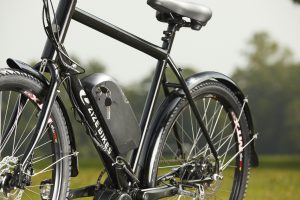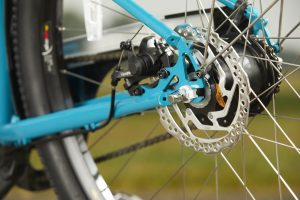An internal gear hub is becoming more and more popular in these days’ bicycles. The technology of internal gears has been around since the start of the 20th century and has become very popular in 1930’s. But why did riders switch to derailleurs, and why should they reconsider an internal gear hub all these years later?
Both the derailleur and the internal gear were actually invented around the same time frame. A two-speed internal gear hub was patented by William Reilly from Salford, England in 1896. French bicyclist Paul De Vivie invented a two-speed derailleur in 1905. However, the initial designs were both a little clumsy and difficult to shift. There were no cables or handlebar mounted levers for shifting while riding. But the two systems significantly led to the same result.
The internal gear system was once limited to three gears, but it’s now offered in eight, 11, and 14 speed models. Such new internal hubs can even cover the same gear range as a 24-speed cassette and derailleur system. Here are other reasons to consider using an internal hear hub on your bicycle:
Reliability
One of the greatest advantages of an internal gear hub is that all the moving components essential for shifting are fully contained in a sealed unit which is the hub. This means that they are 100% protected from dirt, water, grime, road salt, debris, and the like. With no external contaminants that can muck up your shifting system, shifting from one gear to the next will be smooth, at all times. Also, an exposed derailleur is at risk of being bent, damaged, or broken; and a derailleur hanging down from the dropouts will most likely be knocked out of proper adjustment. But an internal hub cannot be easily damaged.
Maintenance and Longevity
An internal gear hub is way easier to maintain than a standard derailleur system. The main thing you have to do is to make sure your chain has proper tension. With a derailleur and cassette system, regular cleaning is required to have smooth shifting. Also, adjusting the limit screws on the derailleur every now and then is necessary to keep shifting smooth. And while keeping the chain and single cog on an internal hub clean is vital, it’s not nearly as much work compared to the derailleur system.
Since the chain on an internal hub is in a straight line always, and does not have multiple gear pulleys and wheels to pass over, it also receives less tear and wear. Everytime a rider shifts from one cog to the next with a traditional derailleur, the chain twists and flexes a little. You will find that you have to get a new chain much often with the derailleur system and you may even need to replace your rear cogs at a certain point. With an internal gear hub, you don’t need to replace the chain or single cog and riding gets simpler without the derailleur getting in your way.
Shifting
Have you ever experienced coming to a stop and realize that you bike is in too high gear to start in? This would not be a problem with an internal gear hub, as you can shift gears while stationary. Unlike with a derailleur system, you don’t have to be pedaling to shift gears. This is excellent in riding in a stop-and-go city traffic. Also, down shifting on a steep uphill would be a lot easier with this system.
Get a bicycle with an internal gear hub and experience all of the above-mentioned benefits and advantages. Visit the website of Zize Bikes, the maker of custom bikes for every body, including bicycles for heavy riders strong enough to support weight up to 550 pounds.







